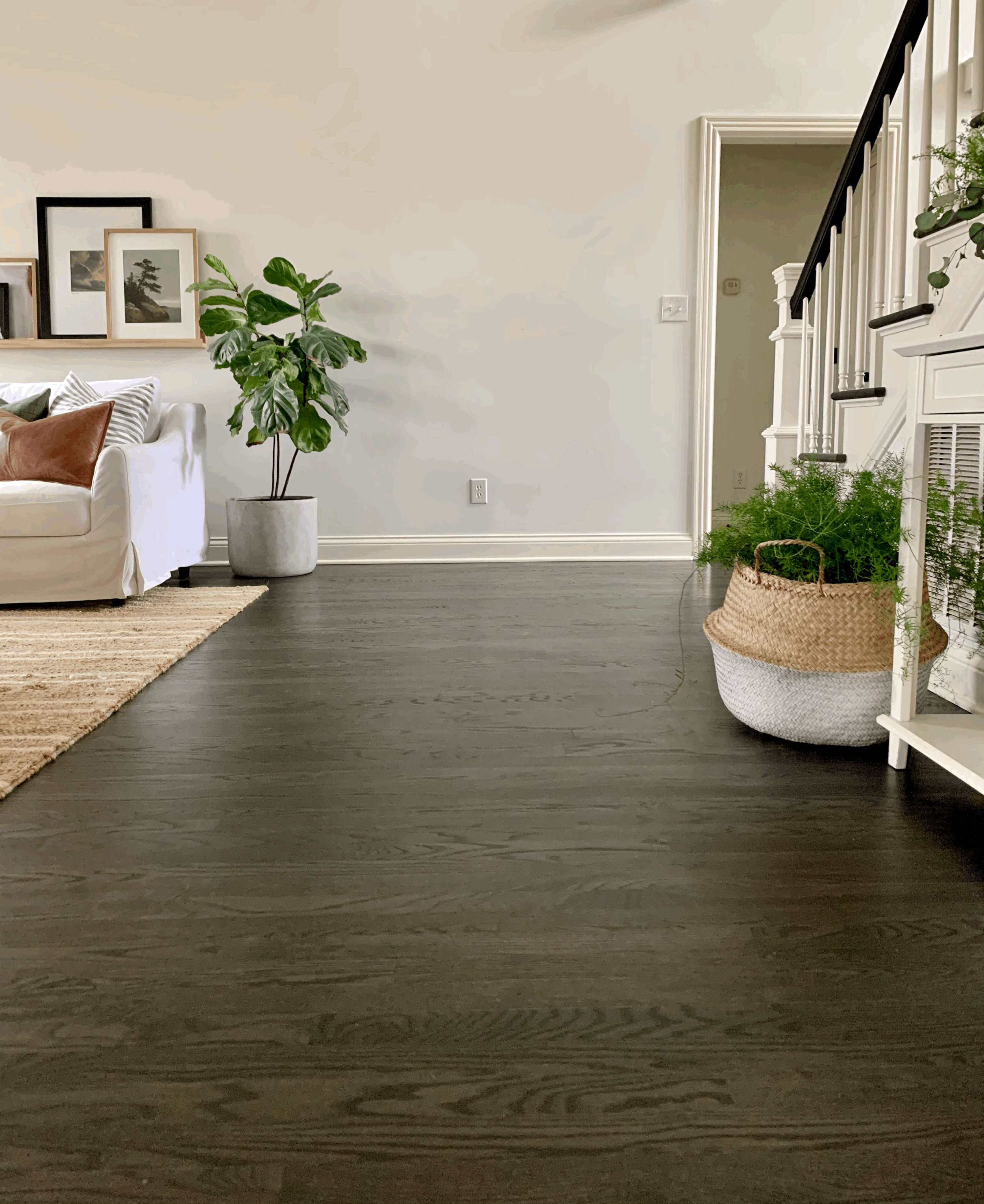why your hardwood floors may gap in winter months
Do you ever wonder why your hardwood floors gap in the winter? Is it normal? Can you do anything about it?
interior design: 25:40 love
Let’s start with the first question, is it normal for your hardwood floors to gap in the winter? The short answer? Yes. The long answer is that wood has a love/hate relationship with moisture and if you don’t nurture that relationship, your wood could give you the cold shoulder. Just like cararra marble will etch if you squirt a lemon on it, unlaquered brass will patina over time and your four year old can leave you a love note on your Italian leather chair with his fingernail, real wood will dry out and shrink in low humidity. Even the most carefully and accurately installed hardwood floors can and will gap in the winter. If the air in your home has a low moisture content, or low relative humidity (RH), your wood loses moisture and when wood loses moisture, its only choice is to shrink.
The next thing we want to address is what can be done to help reduce the size of the gaps. Notice we didn’t say how to prevent gaps at all but to reduce the size. Keeping your home within a 20 degree swing in relative humidity year round will help with gaps (as well as preventing cupping- the opposite of gaps). Here in Kentucky, we advise that a relative humidity be kept between 30-50% year round. Investing a small amount in a relative humidity monitor can help determine if you need to reduce or add moisture in your home.
interior design: 25:40 love
Other things to consider when choosing your hardwood flooring is the size of the boards and species of wood. The smaller the board width, the less they will shrink. A 2 1/4” board will have gaps about half the size of a 5” wide board. I love a wide plank just as much as Studio McGee (in fact, just this week we installed 5” white oak select in our own home) but keep in mind what you’re signing up for when you chose to go with wider planks.
interior design: 2540love
The species of wood you choose will also have an effect on how much it will gap. For example, hickory shrinks more than red oak. And remember, the more your wood shrinks, the bigger the gap you will see.
The last thing we want to address is stain color. While the stain color you choose has nothing to do with how much or little your wood will shrink, in our experience we have noticed a darker stained floor hides the appearance of gaps from a standing distance a lot more than a natural or light stained floor.
So to recap, choosing small red oak boards with a dark stain and keeping the relative humidity in your home in check will cause less gaps than 5” wide hickory boards with a natural finish. As with all finishes in your home, you often have to decide what is most important to you. If you really want those wide white oak planks with a natural finish, yay, I’m on your team, but keep in mind they will change over time. Wood is wood and it will always shrink and expand.






